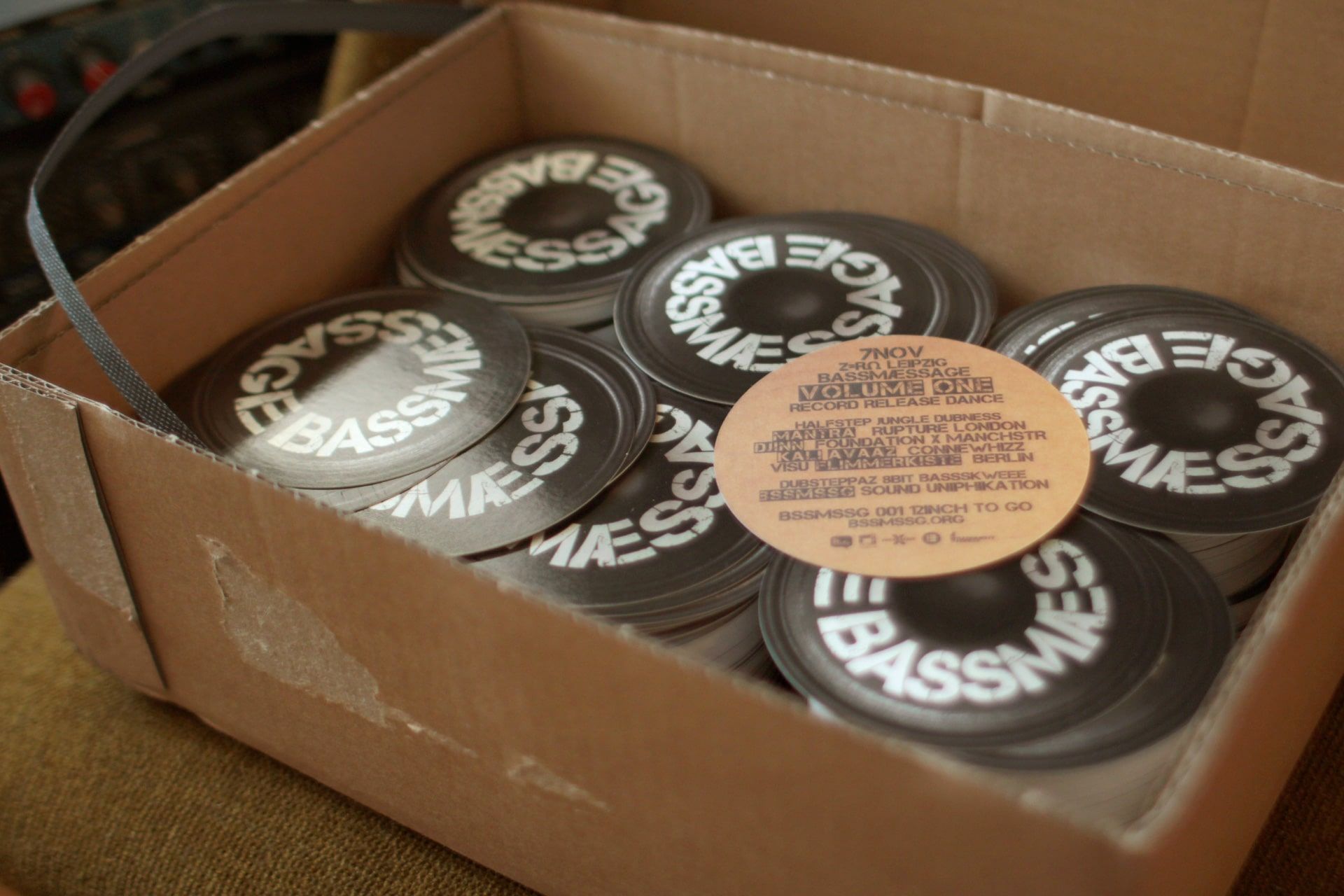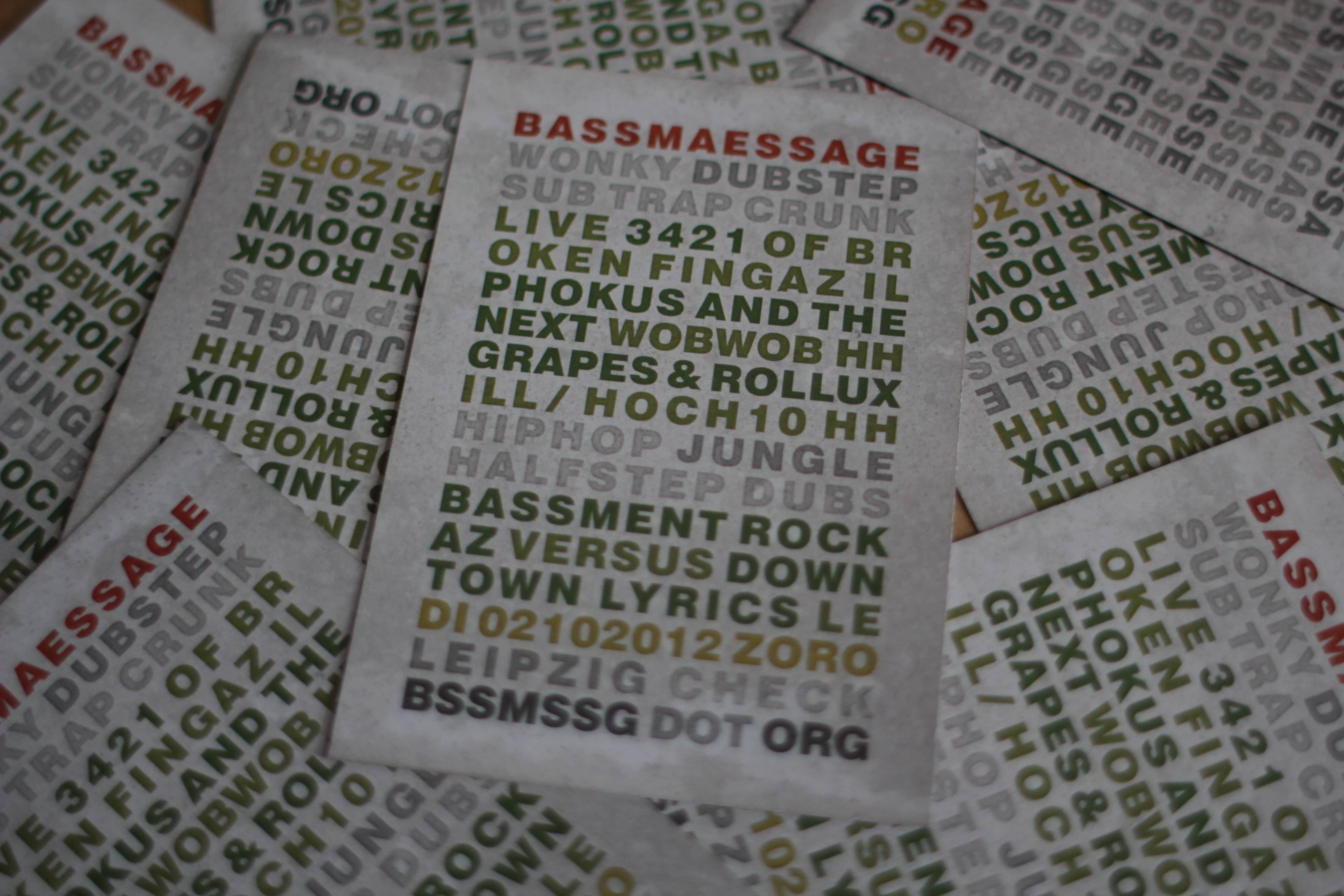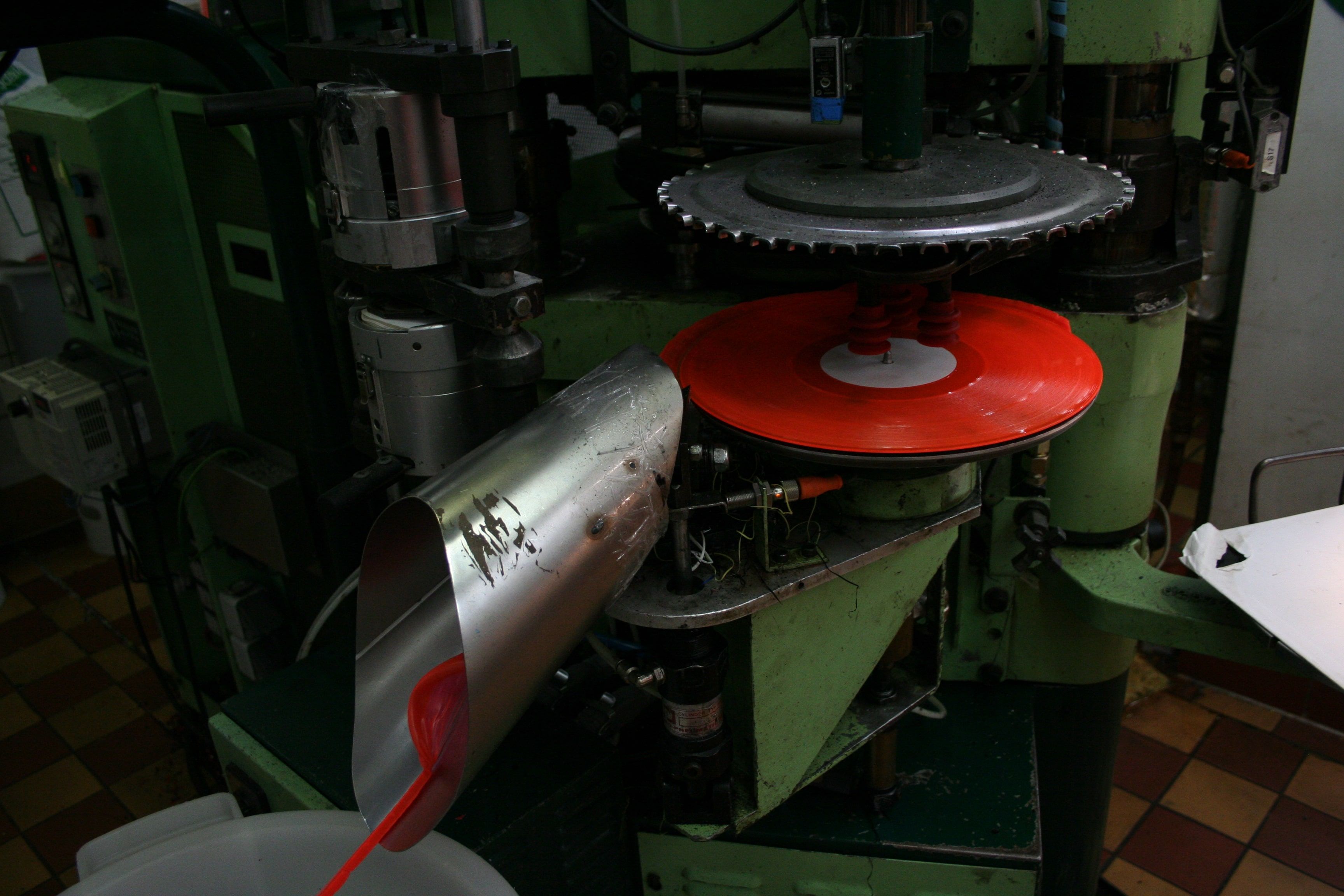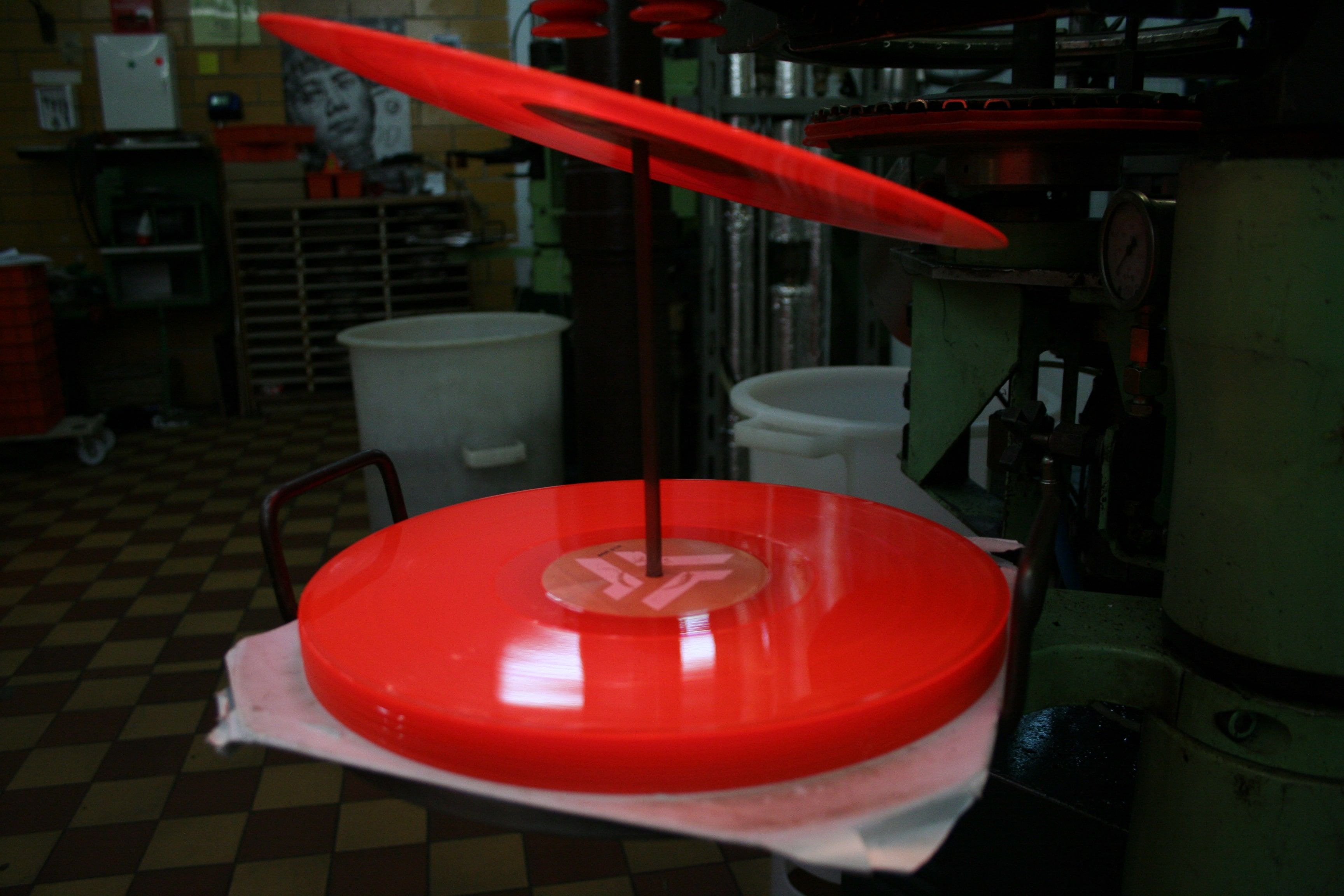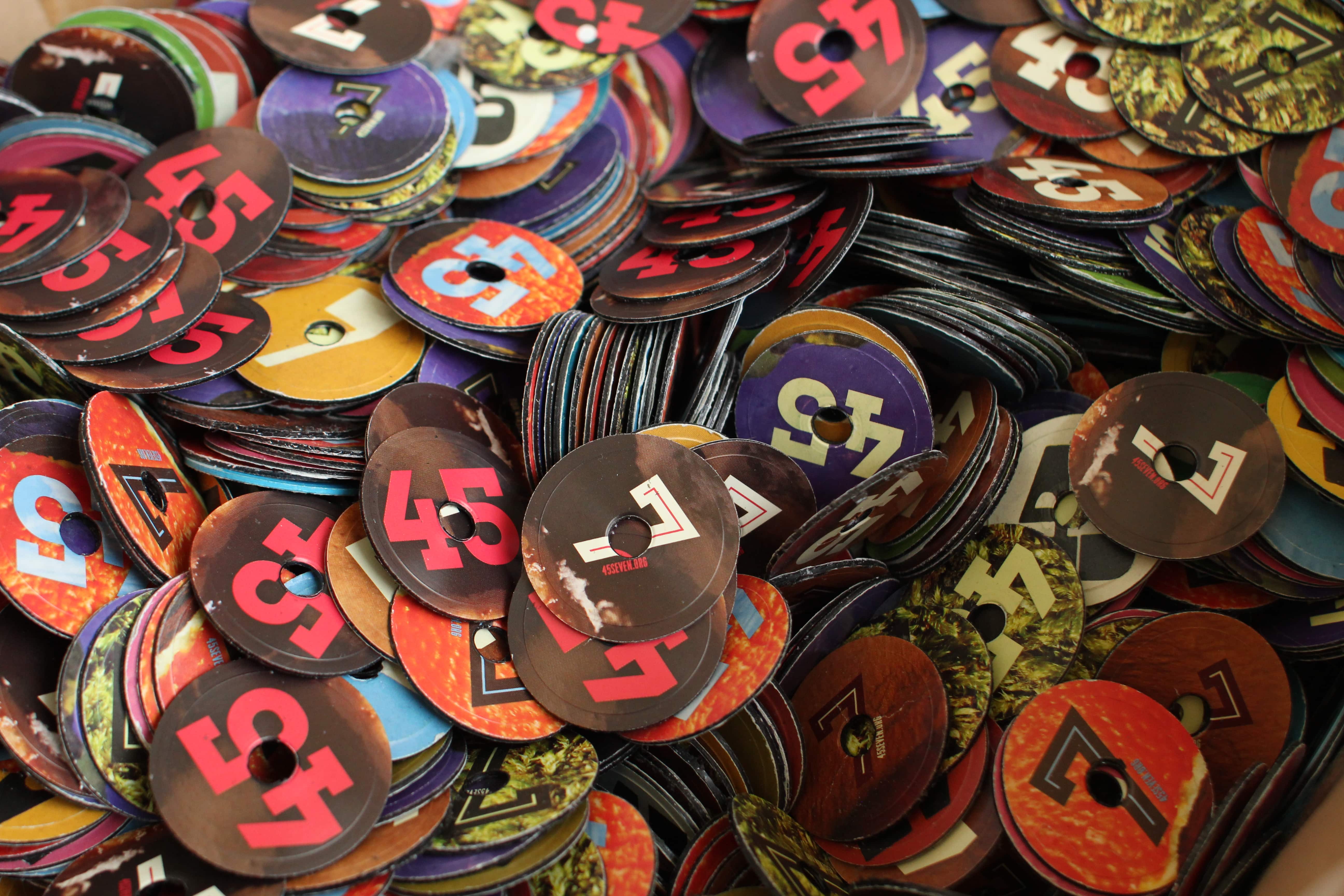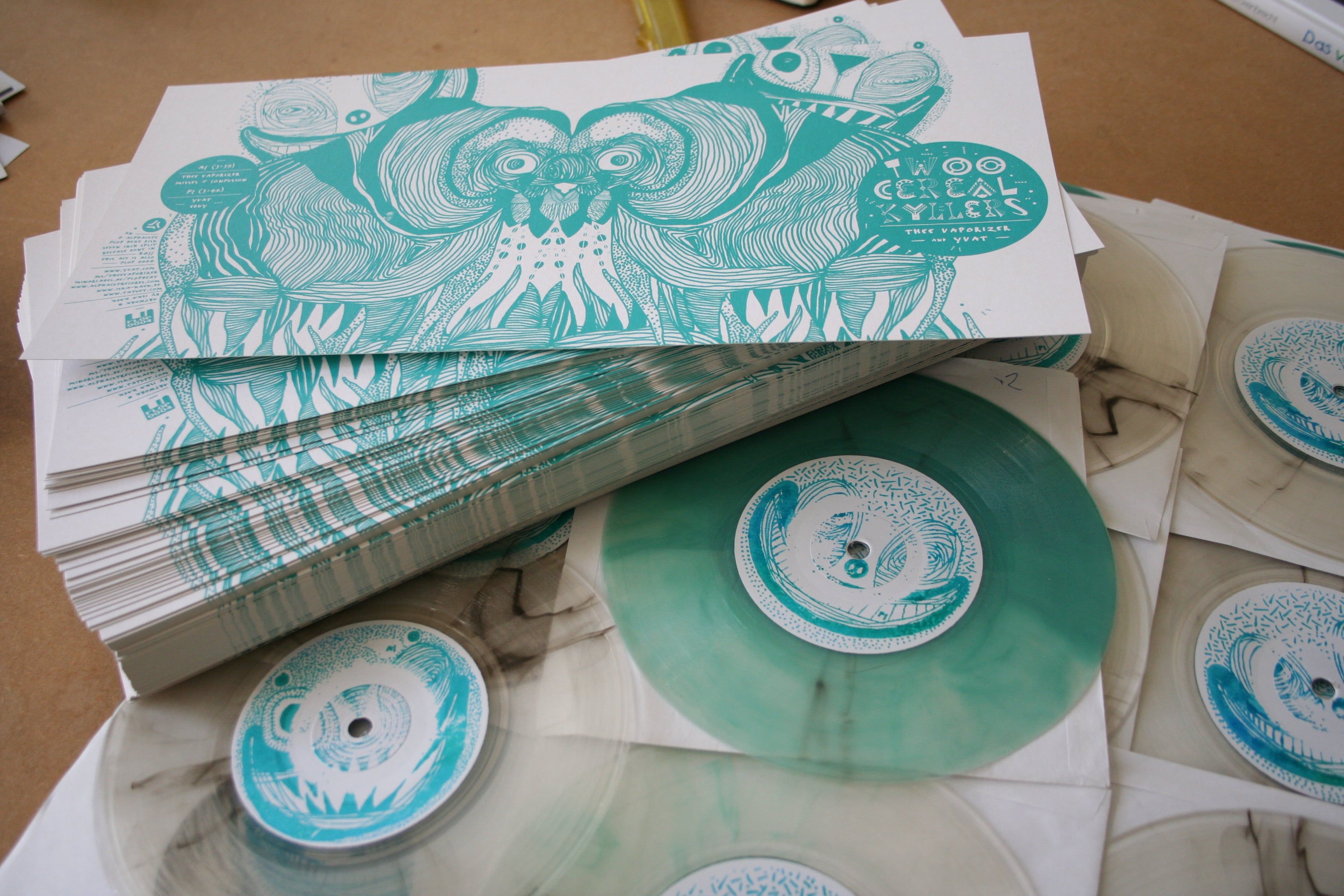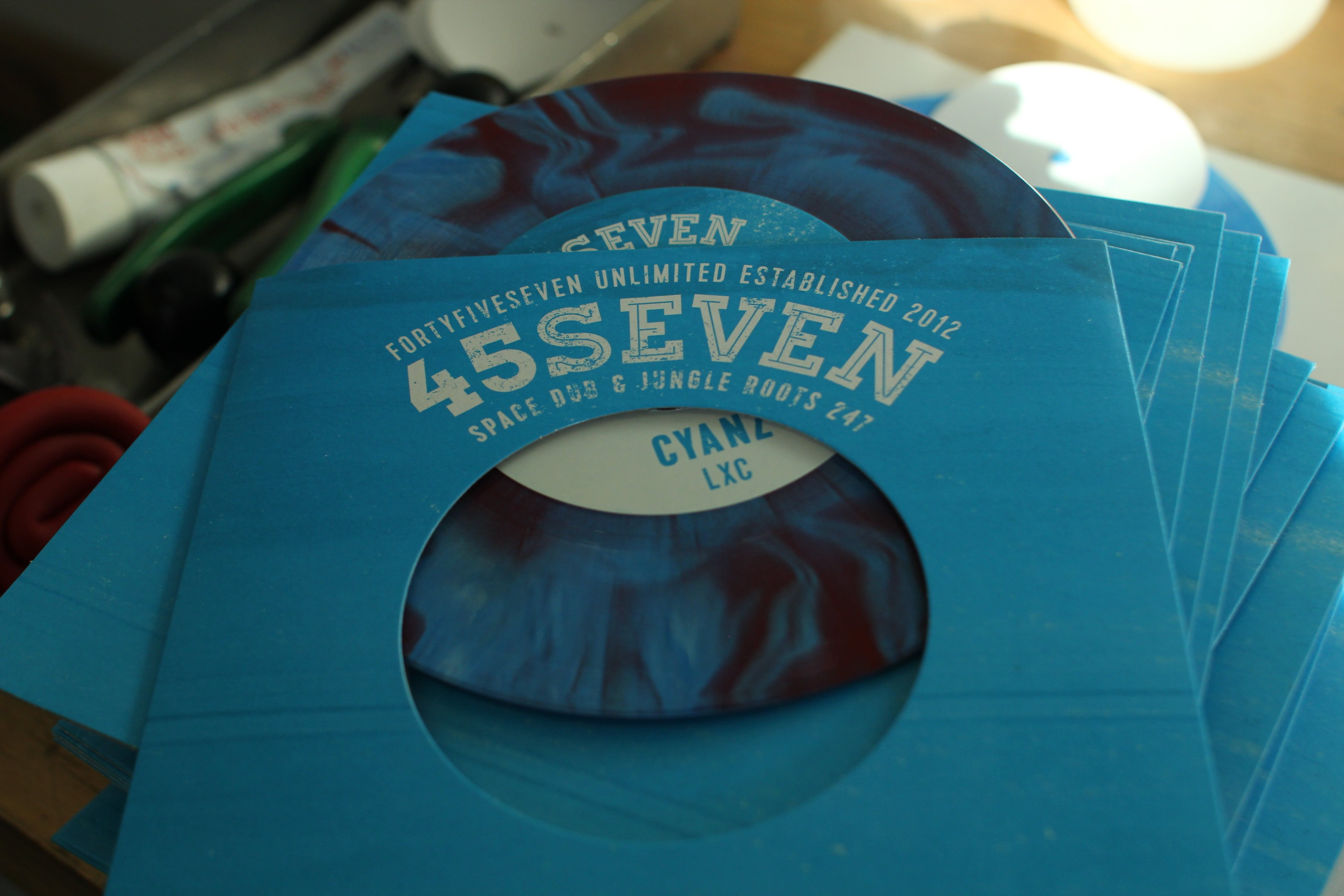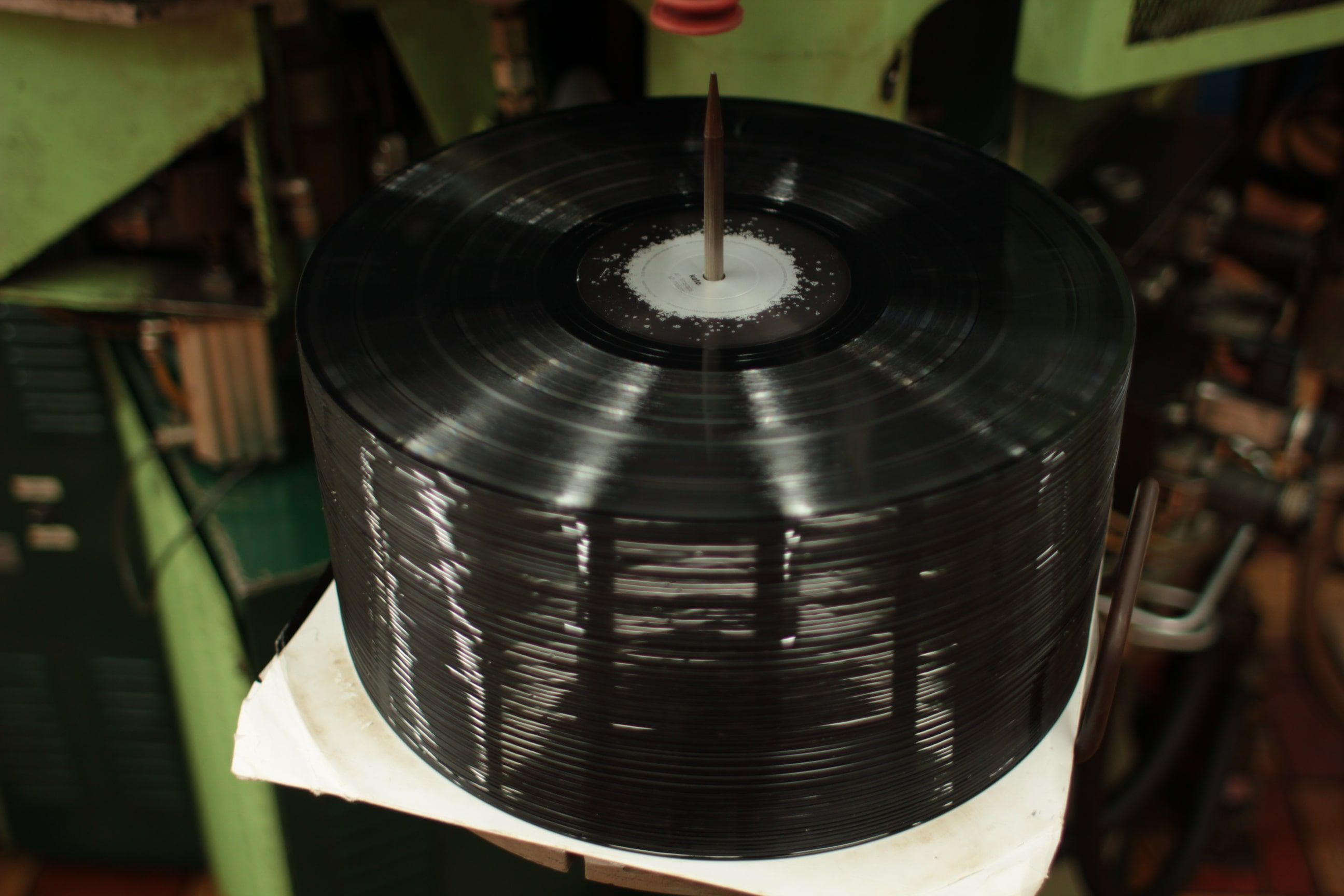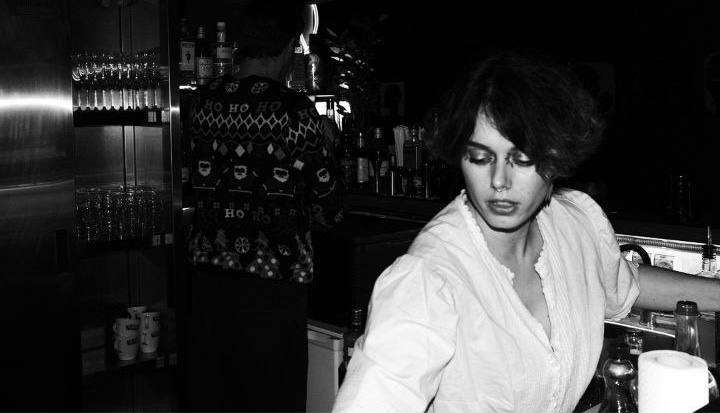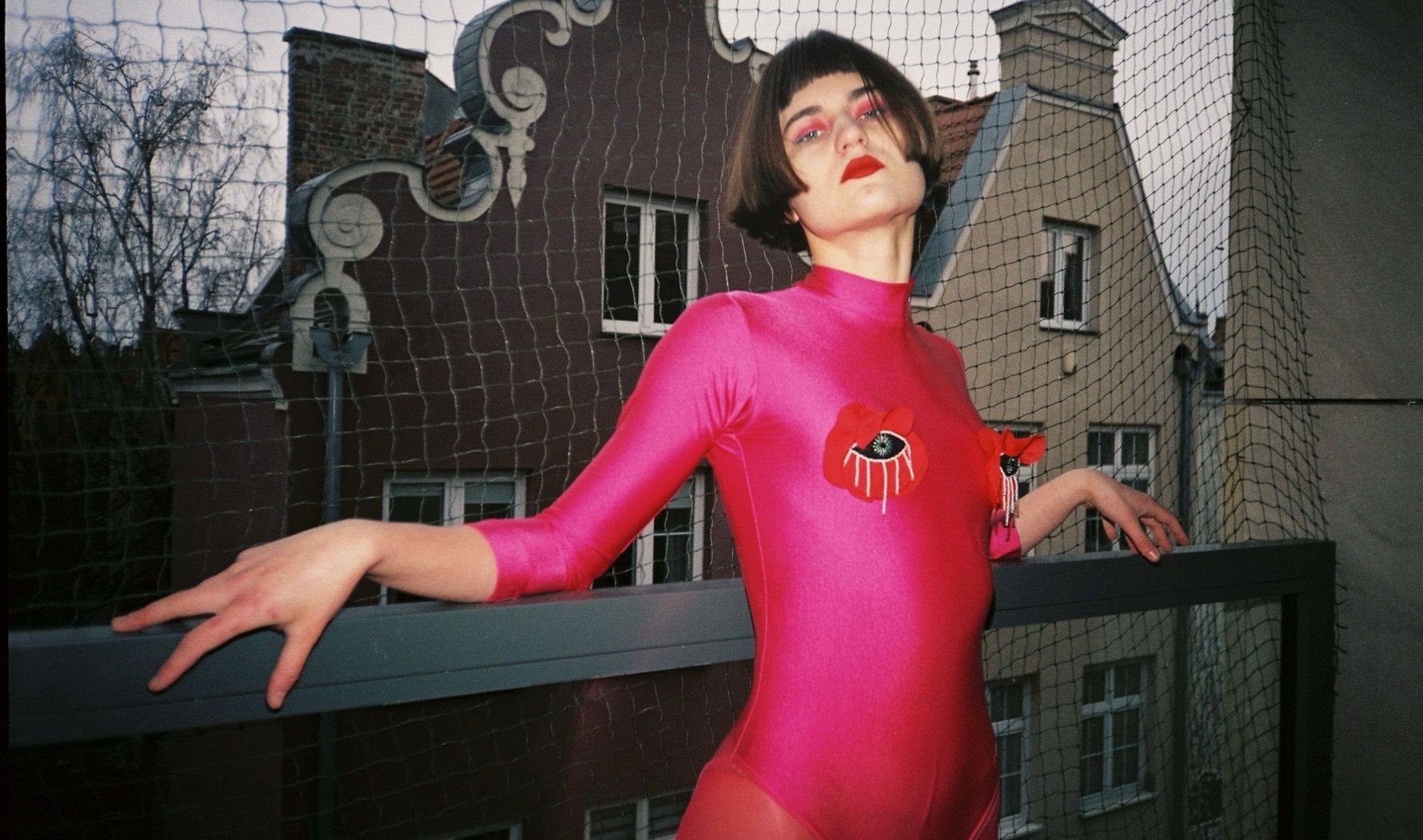Bass, Beats, Bleep, Repeat: A Conversation with LXC
Exploring 25 years of Leipzig’s bass underground, from DIY raves and soundsystem culture to label works and studio life.
Author: mʊdʌki
As part of our Broken News series mapping bass culture in all its shapes, we sat down with LXC — a long-standing operator on Leipzig’s low-end front, running the labels Alphacut and Bassmæssage, and moving beyond clubs and off-spaces through multigenre label curation and co-running soundsystem nights. We talked about sound ecosystems, the art of the low end, the turmoil of the ’90s, DIY self-organization, and how to nurture a local scene. Enjoy the read!
Could you tell us about the beginnings of your activity: how it all started, how Leipzig was changing at that time, and which places were key for the scene?
— We started running nights around 1998. The first steps were microscopic, though — just a bunch of nerds trying to improve their DJing at small outdoor gatherings or in tiny basements. The first more serious promotions came along in 2001 under the name Strukturbruch, a series that combined Drum’n’Bass and Breakcore, done together with the Phantomnoise label and their heartful gang. In parallel, we ran a bunch of other series like Alphacutility, Mashit, and FCKW — often off-radar or off-located.
Some of the bigger raves we threw with a ton of friends had up to seven floors and over 1500 guests, though your typical breakbeat nerd night had roughly 300, as usual. Around 2009, we joined Bassmæssage, a young Dubstep & Reggae night. Together we brought their warm vibes into years of pushing soundsystems and subby frequencies across various styles. These days, it’s a sure shot for all who like it low and want it vibrant.
By the end of the ’90s, Leipzig was a shrinking city — around 450k people — full of lost places and abandoned factories. The police had other problems, often just lacking staff to stop raves. Golden times. We were late to the party, but lucky enough to catch a few great years. Nowadays, the hype is on: plenty of culture and cheap living costs have attracted loads of young urban pros. We’re now beyond 600k, most of the old locations are gone, and the cost of living has at least tripled. The police now have drones with infrared cams... but there are still crews out there rocking it.
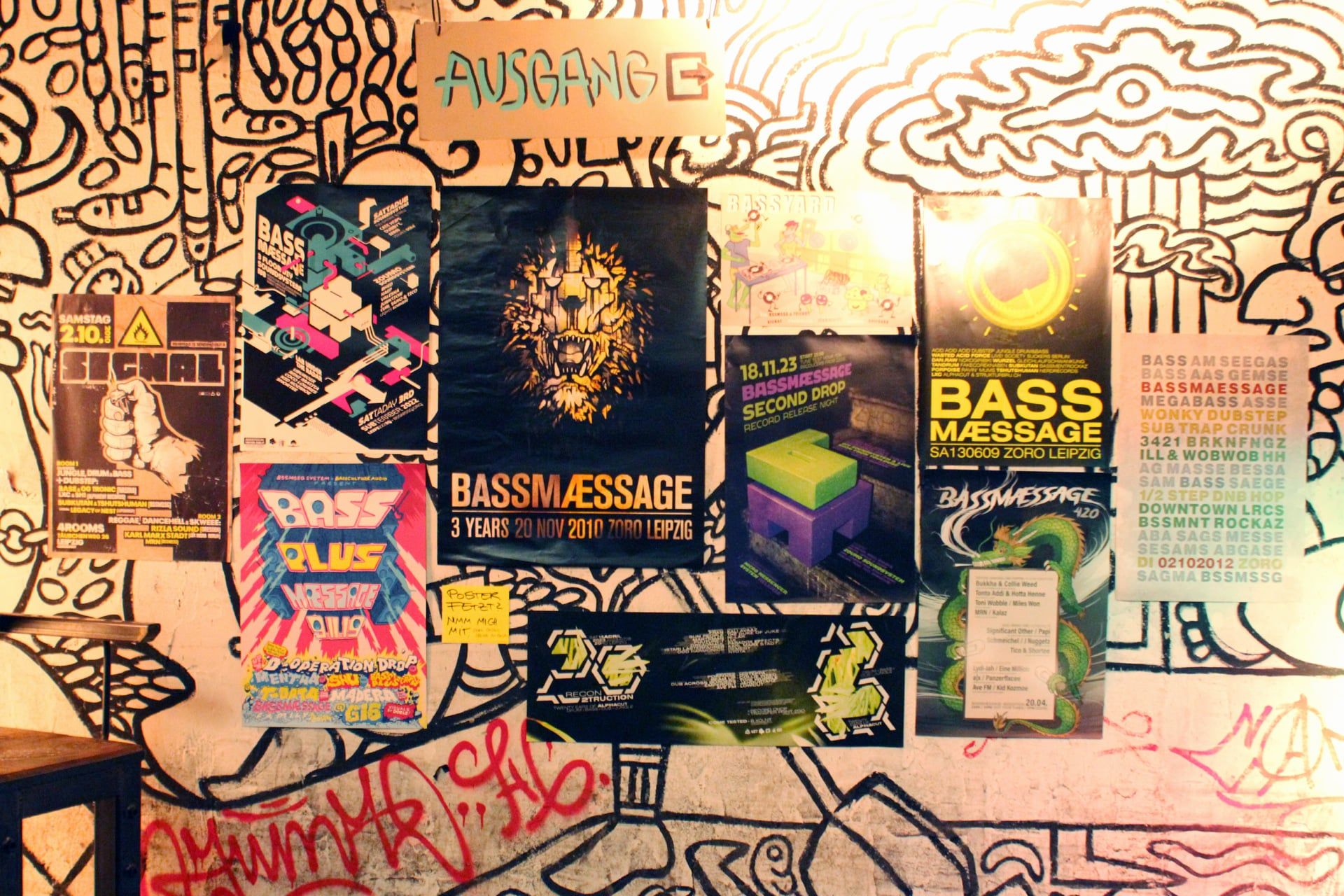
What does a soundsystem mean to you? How do you perceive this culture, and what has been your experience working with different setups — from the technical side to the atmosphere?
— A spontaneous thesis would be: a soundsystem equals PA plus culture and soul. Actually, it's more like PA plus people plus venue and setting plus certain sounds plus presentation plus vibe... A soundsystem isn’t just music amplification. It’s so much more — all the sonic and social connections around it: gathering sound nerds and music lovers, giving the beats a special vibe, and reflecting on what's being played and how.
I get why people see it as a kind of sonic fireplace to come together. But technically, there’s not much mystery to it — every good system has tight phase management, a well-balanced frequency response, and transparency. Ideally, it’s got a little extra on the subs too, so you can really surf the lower waves... but in terms of specs, there’s no voodoo to it.
At the early Bassmæssage nights, of course we tried to get proper-sounding PAs over the years — but often, it was more like one person owned some speakers, there was an underground deal, and then... more or less heaviness on the floor. Sub lotto, so to speak.
The first crew in Leipzig to really push soundsystem culture to the max was — and still is — Plug Dub. They were our first real impression of a local collective with a strong family vibe, playing together (real instruments too!), offering incredible musical depth and, especially, that physical approach towards a blurred vision at the end of the night. They definitely raised the bar for bass music in town — and are still pretty much without competitors. As soon as they were ready to properly wobble a building, Leipzig’s bass scene wasn’t the same anymore. The audience got it — and demanded it. Like, “Yes, this is big, and we want no less than exactly these vibrations!”
Plug Dub have been active since 2012 and went bonkers with fat new amps around 2015 — a classic reggae setup with loaded scoops and HD15s (nowadays upgraded with cubo kicks), but also with clarity and pressure. Had great sessions in front of that rig — good times with the famalay, every single time.
In the meantime, around the Bassmæssage circle, there was Tano’s brainchild: building speakers for sessions and outdoor use, from dubstep to bass music in general. Soon, a small crew formed around it and developed what today is known as the Zoumo Soundsystem. Based on a bandpass design, their four double 18s can play over two octaves pretty evenly — which is great for melodic basslines where you want every note on the same level.
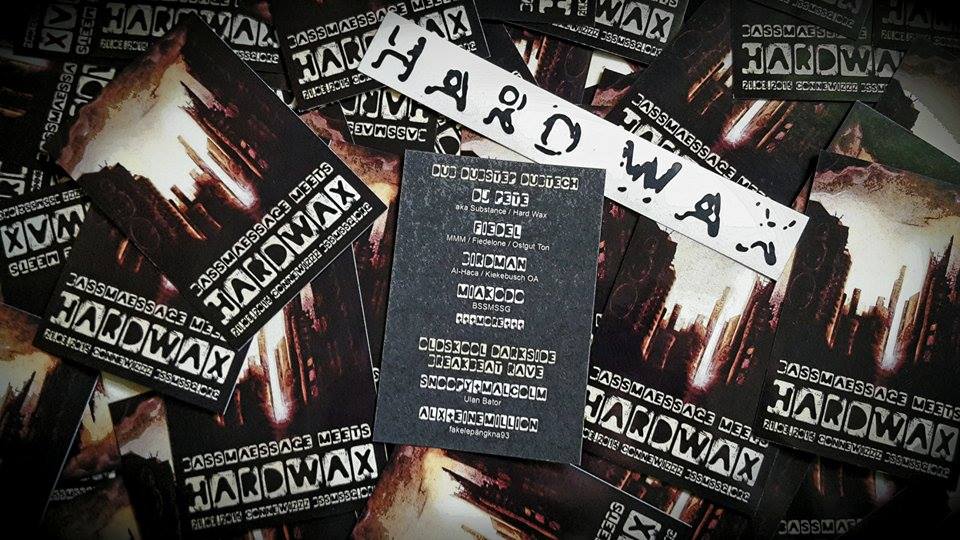
Also within the Bassmæssage fam, there's Three Steps by ALX, with six 18-inch reflex basses — perfect for a nice jungly bounce. On top of that, MRN is taking care of a sweet Sunday system with two 15-inch basses. And I doubt that’ll be the last system coming out of our hoods...
Elsewhere in Leipzig, there's another scoop-based Roots family called Paam, and even a vintage ‘60s/‘70s-style rig under the name Mighty Tip-A-Tone, just to name a few.
And finally — you can’t miss the vibrant bike sound scene in town, with projects like Bassbrause and its mad horn load, plus two handfuls of 12V-powered Paraflex folks who helped run mobile outdoor events like Disdænce during the pandemic. It’s pretty fascinating what’s possible in small spaces with low budgets and full DIY power!
Tell us about the events outside the clubs — what kind of places were they, how did you find them, and what did it mean to you to work in such spaces?
— Raving isn’t a crime here — but it’s still pretty much forbidden. Most of the time, the places we used belonged to bigger companies who either didn’t care or just couldn’t be reached over the weekend. So even if there were noise complaints or the cops showed up, they couldn’t really get in or shut us down, especially if it was private property.
Free party promoters are kinda like lost-place explorers, I’d say: we respect the area and often leave it even better than we found it. Promotion was, of course, fully under the radar — secret addresses, word of mouth, that kind of thing. Only a few of the events I mentioned were real full-blown raves. Some were semi-official, some venues got paid, but most of the time it was DIY scenery... all mixed, but definitely “off.”
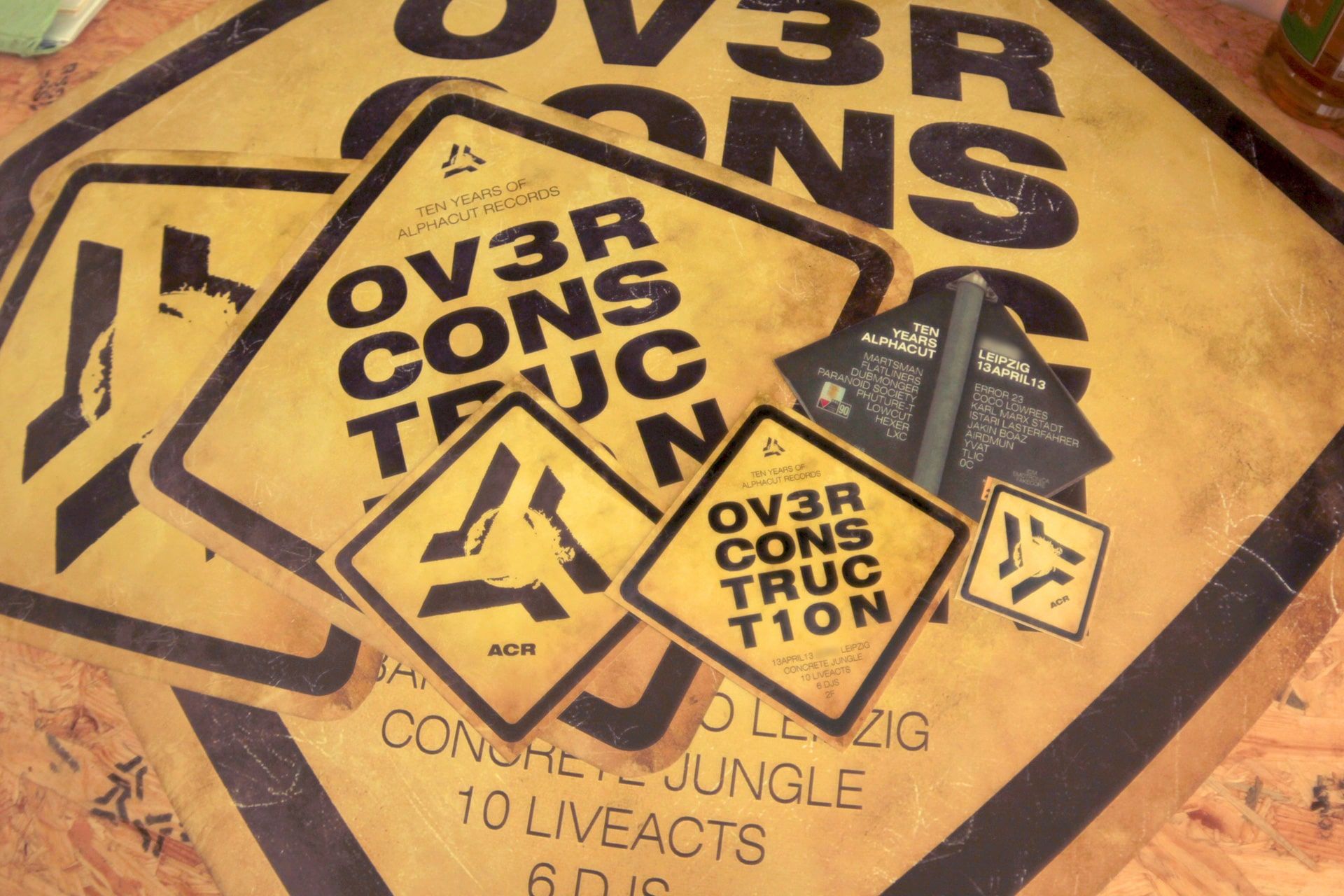
We started out with those classic phone-answer flyers, back when you could still buy prepaid cards. Record store flyer tables were basically the hub for investigating your weekend moves! Off-locations offer a huge amount of freedom in terms of concept, lineup, and style. Basic costs are lower, so you can experiment more. And honestly, I’d say these places actually work better with an open-minded audience — people interested in alternatives to Babylon standards. Sure, the breakout potential is small, but that’s not really the point. It’s all about temporary autonomous zones — or at least the idea of them.
In the end, it’s a question of accessibility, and both the locations and the promoters try to keep that spirit high. That also means tight budgets, and big hyped names are simply impossible — maybe even a bit irrelevant. What might sound like a downside is actually a huge opportunity for up-and-coming artists and sounds. It’s a proper playground for beginners: they can try things out without having to wait for some bigger night to book them.
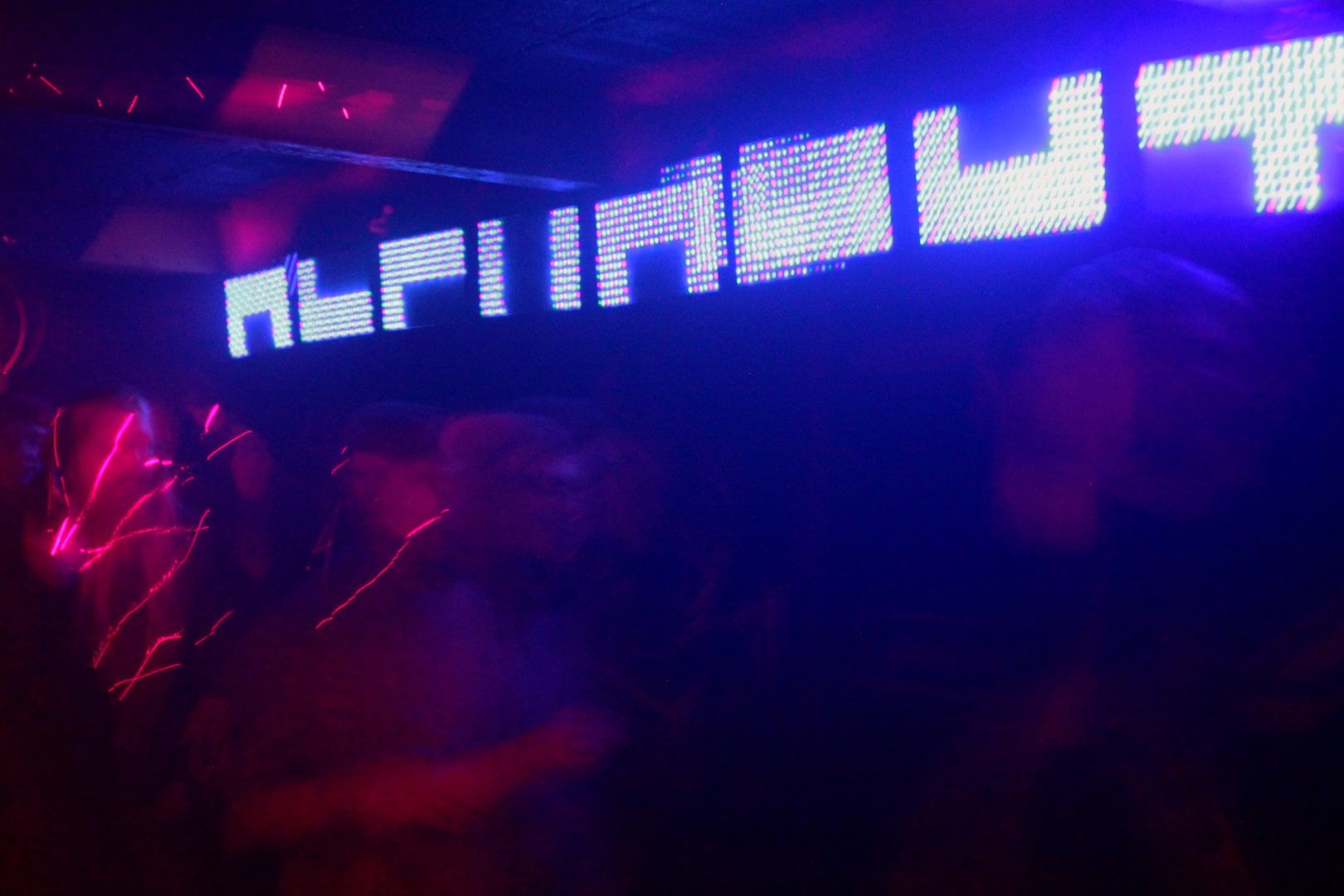
What does the Leipzig scene look like today? Who’s driving it, what’s happening with local producers, and how does it all connect with your labels?
Leipzig’s scene has always been super heterogeneous. It’s not just open-minded to worldwide influences because of its thousand-year history as a trading hub — even during socialist times it had important fairs. Add to that a bunch of universities, both techy and arty, and you get a steady flow of fresh folks every year and a lot of exchange going on.
There are sub-scenes that come and go faster than anyone can really catch them. A lot of people are motivated, but not necessarily connected. The absolute classic around here is the narrative of: “Somebody’s gotta do something, ‘cause there’s nothing going on in this town!” — love it!
There are plenty of promoters and crews doing not only 4-to-the-floor stuff, but also various bass and breaks-related nights. There are always youngsters looking for harder, faster things, and older heads into depth and variety — there’s something for everyone.
What I personally miss in recent years are nights with Breakcore, Dubtech, Skweee or Acidbass. But hey, you can’t have evvvery microgenre out there — or maybe I’m just missing it? Totally possible, since a lot of subculture here is DIY and self-run and doesn’t really get media coverage. That makes it exciting to explore, but it also means there’s a lack of long-term visibility or credit for those who actually keep it alive.
Production-wise, there’s always been a solid bunch of people making beats — though a big part does it just for fun and doesn’t expect any outcome. Co-productions could happen more often, and sometimes I miss having something like the sound of Leipzig. Sure, the parties here are usually a bit deeper and more thoughtful than in the slightly more working-class towns of Dresden or Chemnitz, but there’s no distinct musical signature yet — maybe it’s still forming? But hey, variety is king — and we’ve got that.
As for Alphacut and its sublabels, things are going well. We’re lucky to have a pressing plant here, and at least two solid off-locations to throw nights. Plus, there’s a wide network of people supporting the whole thing — big up for that!
On the latest Alphacut's Post Morphem EP, we featured a secret weapon from Leipzig South: Paradox Effect aka PFX — deep into modular and experimental beat digging, and also helping out with events. Then there’s LUI, one half of the last Alpha Cutauri's Raumwerk EP — an enlightened DJ who can pull off advanced, night-long sets across styles with true genre-chameleon wizardry.
Toni Wobble of Plug Dub, mentioned earlier, is a dubbing force in steppers and jungle, while his coplugger Miles Won does wicked vintage hip-hop beats, complete with vinyl digging and MPC programming. DjBadshape, our local bass masseuse, is deep into jukey jungle and currently finishing a banging Dubcore EP. Schmeichel is on the 160 tip too, crafting exceptional bassscapes from a post-rock background.
Some more honourable mentions — though definitely not a full list: RUZ aka Tinkah aka Cleo AD, Hexer, Lowcut, Kid Kozmoe, Jakin Boaz, sH1 & kjubi, Klangakrobat, Karl Marx Stadt (who lived in Leipzig’s east for five years), DJ Detox, and Pork Four. Big hugs to all — especially the ones I forgot!
And for the final boss, I’ve gotta mention Inushini — an undeniable force since the ‘90s, pushing harsh nights for years and inspiring loads of East German breakcore kids (greetings!). Lately, they’ve been exploring stuff beyond 700 BPM whatevercore, even making noise with lights. Legend!
Beyond producers, there are important labels and platforms in town. First up: the 8-bit dubbers of Jahtari (Kiki, Disrupt, Rootah, and Tapes — who lived here while making a song, too), holding the trophy for the most impactful bass delivery out of Connewitz. Then there’s the radio show and fanzine Zonic by Selektah Pehle, who’s also behind Edition Iron Curtain Radio, reinterpreting post-punk history in the East, and putting out some wild dada dubs.
Minorlabel, somewhere between electronica and punk, also deserves a mention. Then there are the more obvious but still solid staples: Ulan Bator for jungle, Defrostatica for 160 bass, Resistant Mindz for vintage beats, and Insectorama for dub techno. And of course, there’s tons of techno and electro around too!
Don’t miss our own label fam:
Alphacut for edgy jungle, Alpha Cutauri for Drum’n’Space, Alphacute for IDM splits, 45Seven for dubby jungle singles, and Bassmæssage for local bass of all kinds.
You’ve been producing, mixing, and mastering for soundsystems for many years. What makes this kind of production special? What should artists pay attention to, what should they avoid, and what are your own go-to methods in the studio?
— Music made for a soundsystem needs to deliver the same full-spectrum response as conventional beats — maybe with a lil extra sub, but that depends on your taste, setup, and overall vibe.
Sonic reproduction always depends on a bunch of factors: room acoustics (reflections, resonances, traps), speaker designs (distribution, phasing), drivers (efficiency, distortion), amplification specs, needles (geometry, fidelity), and the digital converters or vinyl cuts — plus, of course, the tunes themselves and how they work across the spectrum over time. Any one of those elements can turn into a mess on its own!
Different musical styles have their preferred functional frequencies: freetek likes that chest-blasting 100 Hz, dubsteppers love a rumbling 40, and roots reggae benefits from that upper scoop energy... There are loads of methods and preferences out there. Personally, I think mastering should aim to sound good in any listening situation. I’ve never tweaked a track specifically for one system or event — yet. But who knows, maybe that’s the holy grail of dubsolute nerdism!
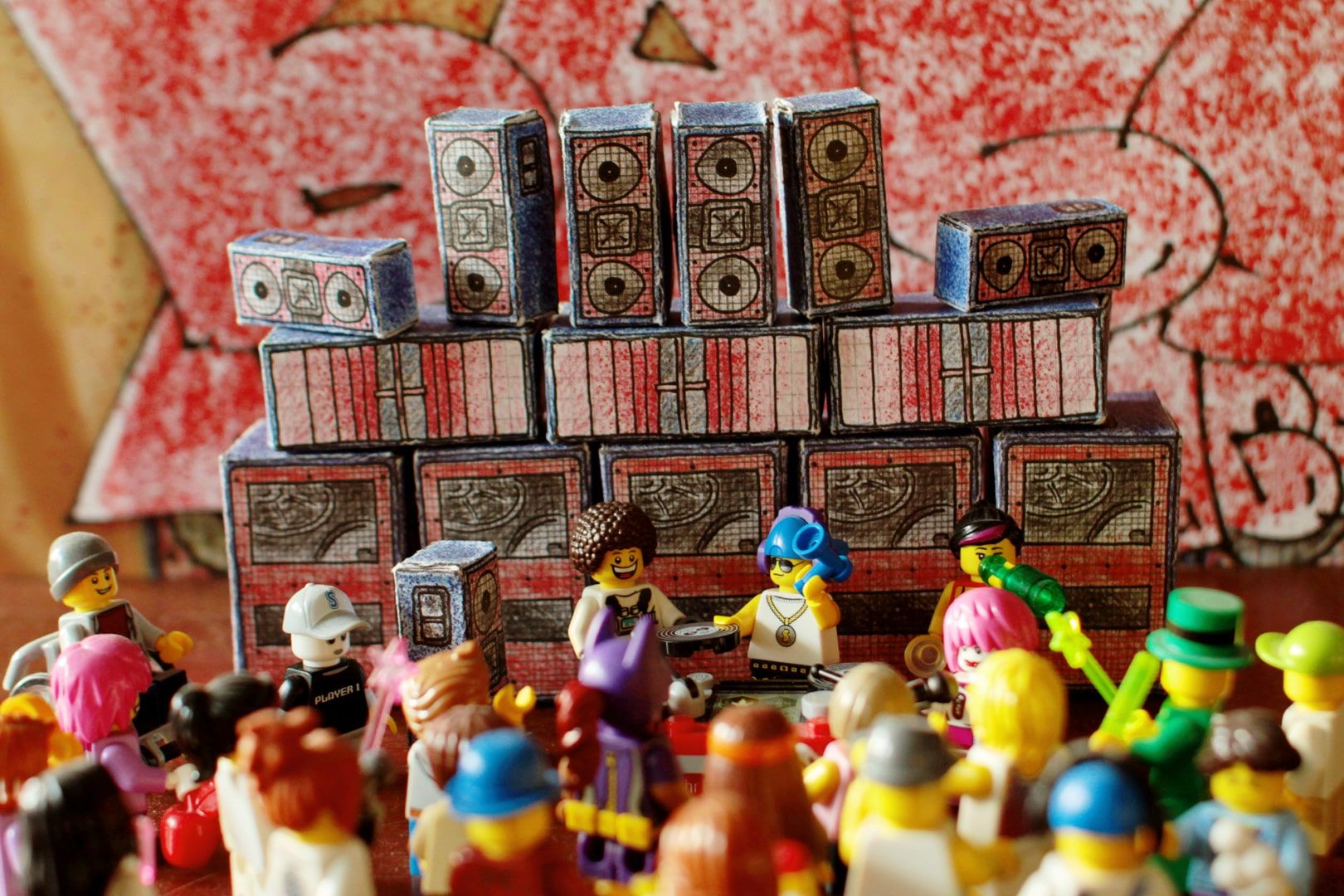
Until then, my two cents: respect the intention of the original recording. Keep the central idea intact. Stick with the likes of the musicians and their fans — especially the references they had in mind while making the track. A key ingredient is understanding where they imagine their beats will live. Then take it further — take them somewhere they didn’t even dare to dream of. Polish the vibe and let it shine.
Let me give you a few examples of what to watch out for. Almost everything these days is produced and post-produced in stereo. That opens up space for out-of-phase signals that can cancel each other out in some situations. To avoid this, it’s best to aim for mono compatibility by spreading the stereo image only up to about 90° between the channels. That way, the side information is about half as strong as the mid — so in the worst case of full phase cancellation, you’ll only get a slight volume drop in that element.
This becomes especially important with bass, which is traditionally kept centered. Sounds below 100 Hz are difficult to localize acoustically anyway, and they’re usually best amplified by a single mono stack in a room. Plus, vinyl records go for mono bass too, since the side signal is written vertically — if it’s too low and too heavy, it can cause the needle to jump. Some acts (especially in experimental techno) go super wide on purpose — which is cool, but I’d recommend not to overdo it unless you’re okay with unpredictable results.
Then there’s loudness. Every genre or scene has its own style here, but technically most of them go way beyond “natural” levels. There’s no such thing as clipping, brick-walling, or saturation in real-world analog soundwave reproduction. Sharp-cutting levels always add harmonics, and those are phase-unlocked during conversion, amplification, and transmission — which means they behave differently on every system. If you're into surprises, go for it.
And don’t forget the good ol’ vinyl. What still sounds powerful in the digital realm often gets squashed into mud halfway down the groove of a record. So yeah — finding that sweet spot between expected heaviness and clean playback can be tricky. In a way, it also reveals what’s actually useful — and “wise” — to aim for. Just because a medium can be pushed doesn’t mean you have to max it out.
At the end of the day, every style has its own preferences — stereo width, roll-off (aka high-end, air, tops), sub-to-kick ratio, low-mid-high balance, overall loudness, and so on... And again: it really helps to understand the expectations.
<iframe width="100%" height="300" scrolling="no" frameborder="no" allow="autoplay" src="https://w.soundcloud.com/player/?url=https%3A//api.soundcloud.com/tracks/soundcloud%253Atracks%253A2115611466&color=%23ff5500&auto_play=false&hide_related=false&show_comments=true&show_user=true&show_reposts=false&show_teaser=true&visual=true"></iframe><div style="font-size: 10px; color: #cccccc;line-break: anywhere;word-break: normal;overflow: hidden;white-space: nowrap;text-overflow: ellipsis; font-family: Interstate,Lucida Grande,Lucida Sans Unicode,Lucida Sans,Garuda,Verdana,Tahoma,sans-serif;font-weight: 100;"><a href="https://soundcloud.com/radioplato" title="Radio Plato" target="_blank" style="color: #cccccc; text-decoration: none;">Radio Plato</a> · <a href="https://soundcloud.com/radioplato/broken-news-60-w-lxc-alphacut-45seven-bassmaessage" title="Broken News #60 w/ LXC (Alphacut, 45SEVEN, Bassmæssage)" target="_blank" style="color: #cccccc; text-decoration: none;">Broken News #60 w/ LXC (Alphacut, 45SEVEN, Bassmæssage)</a></div>Could you walk us through the selection in your mix — how you chose the tracks, the stories behind them, and maybe some connections between you and the producers?
— The first half of the mix is mostly by myself — a blend of oldies and some very recent bits. The second half dives into forthcoming material on 45Seven and Alphacut, spiced with a few exclusives here and there.
It all kicks off in the dark spheres of You Did Wrong, then dips into Rude T33n’s acid bath. The first proper beat drops around minute 5 with 101 Delaytionz — a piece I was lucky to put together with Dubmonger (formerly Morphy) when he came over in 2011 for a live gig at Conne Island. It was the very first ease up^ night, a series we co-ran for deeper Jungle and Drum’n’Bass. We didn’t even decide on 160 BPM — it just felt natural while setting up the basic groove. That was long before 160 was really a thing here. It was basically recorded on the fly — the claps are both of us, and all the (SH-101) sounds are him playing live. Proper abi memories!
Juusu Dub for Zee is also special to me. They were visiting too (even earlier), and their original dubtech material just slid effortlessly into 170 BPM. Same with the Gocciolina refix for Annuluk — it came fast and naturally, right after a phase of synthetic drums when I was really craving proper breaks again.
Fishlime Restep is a more recent one — a fun opportunity to pay homage to the legendary East German material from AG Geige. While we're on rave stabs, you can hear the recently finished Higher Level and Connor ravefixes — one for 45Seven abi Beam Up, the other for Defrostatica’s Kator.
Bu Pishik means black cat. Apparently it’s about an old and grumpy one. Ya Tosiba is an interesting duo — she brings traditional Azerbaijani male chants into modern, free female rap, while he’s electro legend and skweee king Mesak. The original riddim was built by none other than Patric Catani. Their stems were packed with great stuff to work with — especially a murder kick buried in reverb that I just had to bring out.
Men Hiki Men was a spontaneous collab with JB from Dresden. He brought in recordings from a Kendo training field and a bamboo flute he could barely play — but somehow, the result turned out really meditative. Years later, I contributed it to Tokyo’s BS0 remembrance compilation. Rave in peace.
On tour in Zürich, we were brainstorming weird style combos and, well — a bunch of stoners came up with Dubber: a blend of, yeah, dub and gabber. It was first concept-tested by Random Bit Generator’s Dubberwise on Alphacute back in 2010. Then recently, some lovely people in Copenhagen actually founded the Gabber Dub Project, which I was lucky to refix dubber-style — with 160 BPM amens and custom kicks — for Sozialistischer Plattenbau. Ganja Dubjah was an early stage of Dubbersæt — a dub of a Polish post-rock classic, made for the Soundsystem Street Festival in Zgorzelec last year.
After all that remix madness, the mix dives into the label pipelines of 45Seven and Alphacut — in loooonger mix mode, spiced with a few extra gimmicks. On the strictly current bass tip: Yeh Sih by Dub Across Borders will be on the next 45Seven release. It’s in the pressing machinery as we speak — and honestly, it’s one from the heart. No hesitation to sign it — just send it out into the universe. The next two tracks will be on the second upcoming 45Seven plate, cooked up by Toni Wobble of Plug Dub. There's also a special interlude by DIS from Chemnitz, who's been repping raggajungle in the region for decades. And then… a bubbling pool of forthcoming Alphacut material. Big up all alphacats!
How’s the label doing these days? What keeps it running, what’s been difficult recently, and how do you see its future?
— Alphacut is still putting out 12” mixed-artist EPs from time to time — a bit slower these days, but more focused in terms of concept for each package. 45Seven keeps firing off 7” dubby jungle, and some of the other sublabels might come back when the material feels right and satisfying enough.
We’re in tricky times for analog records. Brexit made UK distribution a nightmare, various wars have driven up material costs, pandemic restrictions messed with logistics, and inflation is squeezing everyone. So, yeah — less money is going into the market, while production prices are only going up.
Still, I’m trying to keep it alive as long as possible. The more people support it, the more space we have for experimental and fresh stuff!
What keeps you inspired to keep doing what you do?
— “Bass, beats, bleep, repeat!” — and that could go on forever. Sound is just endlessly fascinating. The more you hear, the less you actually know. I love flipping narrow-minded concepts and throwing in weird combinations that make sense somehow.
I’ve got this theory that higher civilizations are harvesting Earths to farm artistic inspiration. I mean, if you live in a world with no struggle — or even no death — creativity must dry up, right? So when those ships come down, I’ll be ready... armed with dubs.
